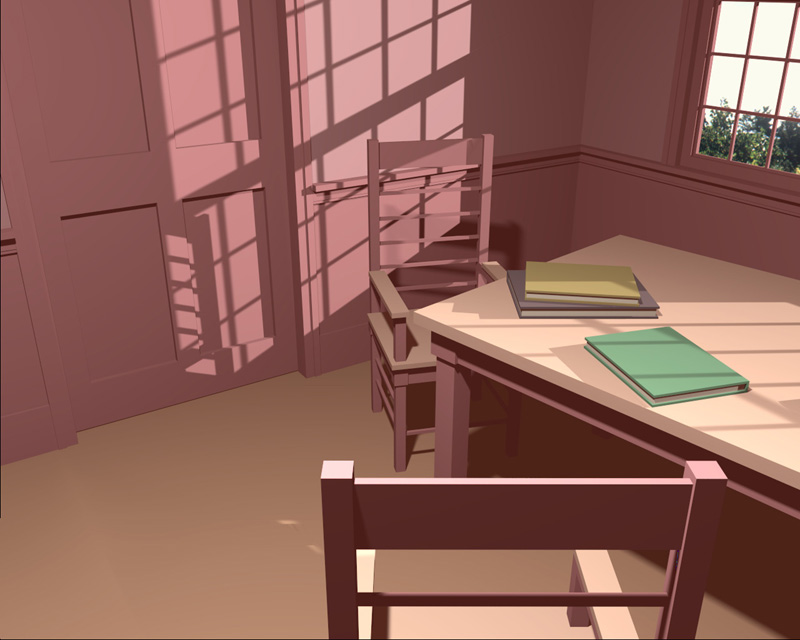|
|
[LTG92]
Cornell University Program of Computer Graphics |
|
||||
Discontinuity meshing for accurate radiosity.Dani Lischinski, Filippo Tampieri, and Donald P. Greenberg.IEEE Computer Graphics and Applications, 12(6):25--39, November 1992. We discuss the problem of accurately computing the illumination of a diffuse polyhedral environment due to an area light source. We show how umbra and penumbra boundaries and other illumination details correspond to discontinuities in the radiance function and its derivatives. The shape, location, and order of these discontinuities is determined by the geometry of the light sources and obstacles in the environment. We describe an object-space algorithm that accurately reproduces the radiance across a surface by constructing a discontinuity mesh that explicitly represents various discontinuities in the radiance function as boundaries between mesh elements. A piecewise quadratic interpolant is used to approximate the radiance function, preserving the discontinuities associated with the edges in the mesh. This algorithm can be used in the framework of a progressive refinement radiosity system to solve the diffuse global illumination problem. Results produced by the new method are compared with ones obtained using a standard radiosity system.
This paper is available as a PDF file LTG92.pdf (4.8M).
| ||||||
| ||||||
